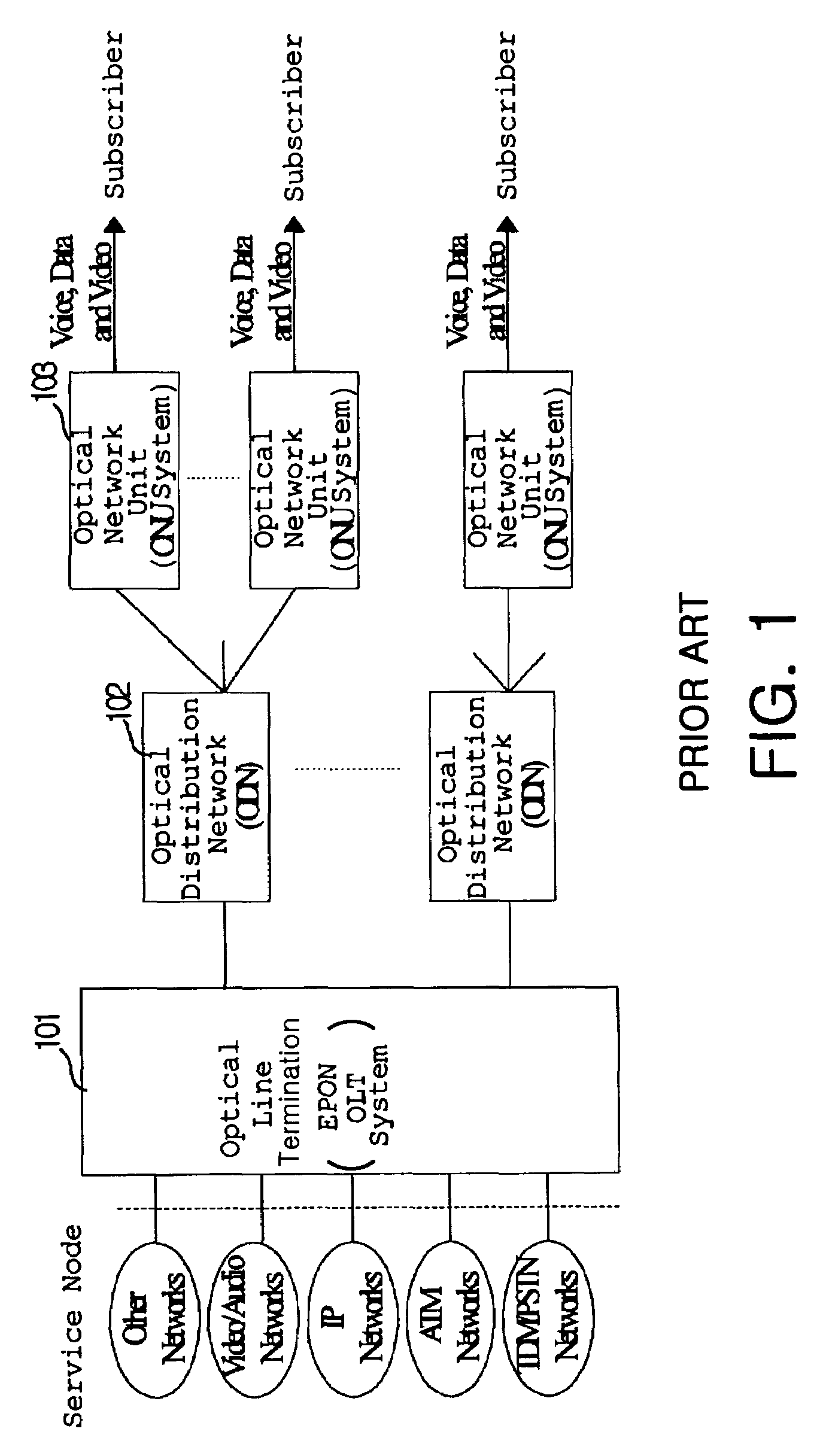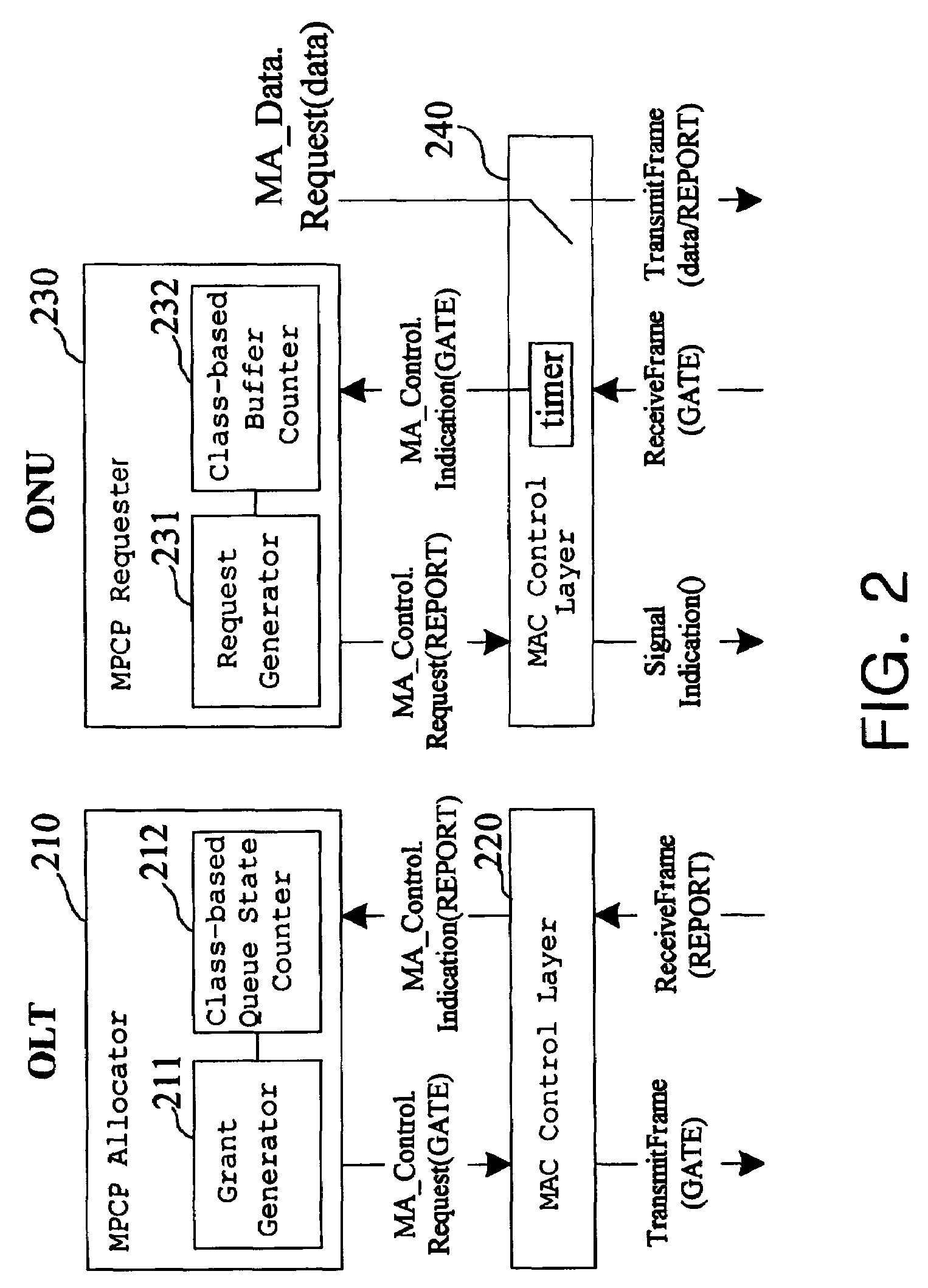Bandwidth allocation device and dynamic bandwidth allocation method based on class of service in Ethernet Passive Optical Network
a passive optical network and allocation device technology, applied in the field of co-based allocation devices and dynamic bandwidth allocation methods, can solve problems such as collisions between users, and achieve the effect of ensuring the quality of each servi
- Summary
- Abstract
- Description
- Claims
- Application Information
AI Technical Summary
Benefits of technology
Problems solved by technology
Method used
Image
Examples
Embodiment Construction
[0039]According to the present invention, an optical transmission protocol scheme between subscribers and a telephone office in an Ethernet Passive Optical Network (EPON) classifies services into high priority, medium priority, and low priority services. The high priority service is defined as a service having requirements of end-to-end delay and jitter. The medium priority service is defined as a service which is not sensitive to the delay but requires a specific bandwidth. The low priority service is defined as a BETC (Best Effort Traffic Class) service with no requirement of end-to-end delay and jitter, which is assigned a marginal bandwidth. A maximum bandwidth is defined as the total amount of bandwidths set to the corresponding ONU, i.e., a sum of bandwidths allocated to each of the classified services.
[0040]Upstream bandwidths are allocated to the classified services in the priority order to provide each of QoS-guaranteed services.
[0041]Now, embodiments of the present inventi...
PUM
 Login to View More
Login to View More Abstract
Description
Claims
Application Information
 Login to View More
Login to View More - R&D
- Intellectual Property
- Life Sciences
- Materials
- Tech Scout
- Unparalleled Data Quality
- Higher Quality Content
- 60% Fewer Hallucinations
Browse by: Latest US Patents, China's latest patents, Technical Efficacy Thesaurus, Application Domain, Technology Topic, Popular Technical Reports.
© 2025 PatSnap. All rights reserved.Legal|Privacy policy|Modern Slavery Act Transparency Statement|Sitemap|About US| Contact US: help@patsnap.com



